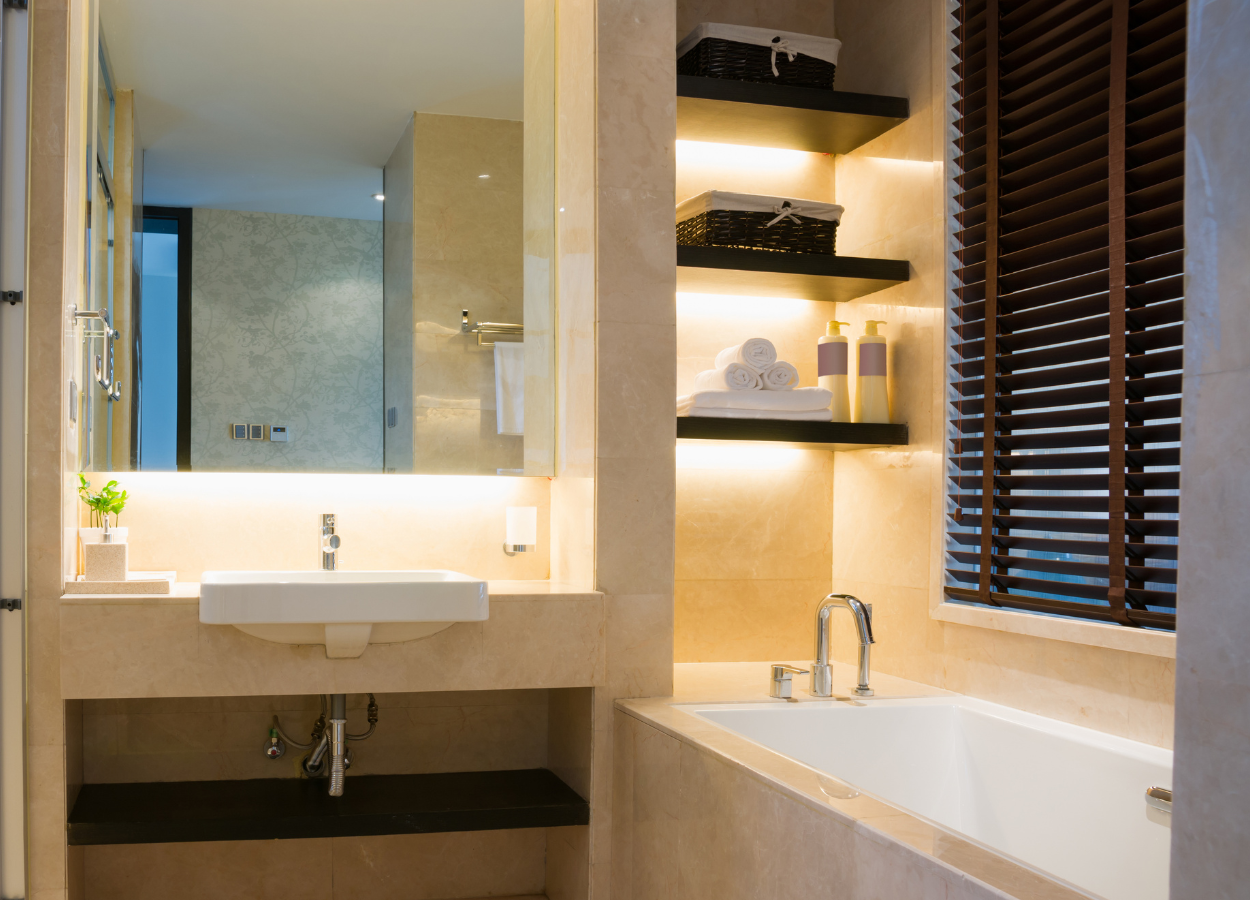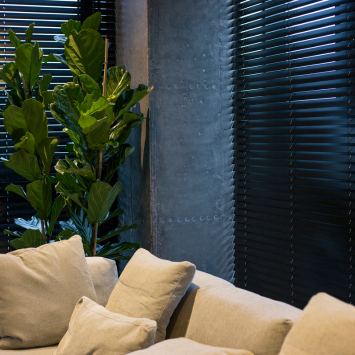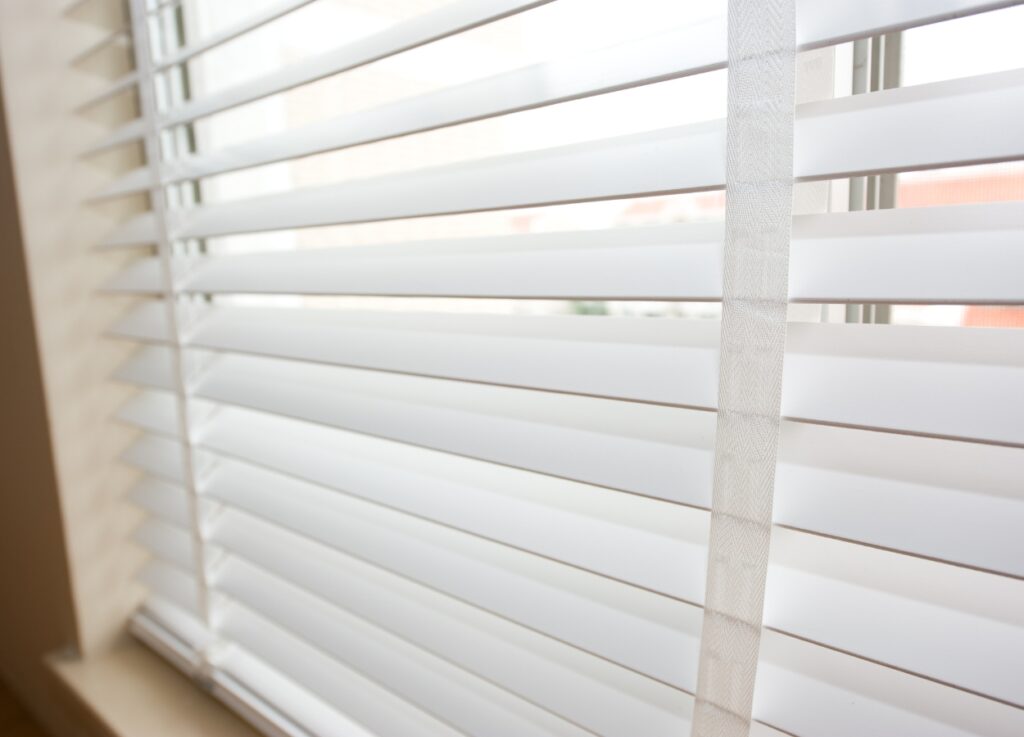Faux wood blinds are generally heavier than real wood blinds. The extra weight of faux wood blinds can become an issue, especially for larger windows, and may make frequent lifting more challenging. When choosing between real wood and faux wood blinds, it’s important to consider the size of your windows as a factor in deciding which type is more suitable for your needs.

Real Wood vs. Faux Wood blinds: Which is heavier?
If you’re in the market for new blinds, you’ll quickly discover that there are many options available. Two popular choices are real wood and faux wood blinds. Both options offer a classic look and feel, but there are some differences between the two. One question many people have is which is heavier – real wood or faux wood blinds?
Understanding the difference between Real Wood and Faux Wood Blinds
Real wood blinds are made from natural wood materials such as basswood, cedar, or pine. They are known for their high quality, natural appearance, and durability. In contrast, faux wood blinds are typically made from a composite material that is designed to look like real wood. Some common materials used for faux wood blinds include vinyl, PVC, and composite wood. They are generally more affordable than real wood blinds, making them a popular choice for many homeowners.
So, which type of blind is heavier? In most cases, faux wood blinds are heavier than real wood blinds. This is because faux wood blinds are made from a combination of materials that includes some type of polymer or plastic. While this allows faux wood blinds to emulate the look and feel of real wood, it also adds weight to the product.

Real Wood vs. Faux Wood Blinds: Which is right for you?
When deciding between real wood and faux wood blinds, there are several factors to consider. Weight may be an important factor if you have large windows or if you prefer to have a lightweight product. Real wood blinds are generally lighter than faux wood blinds, so if weight is a concern, they may be the better option. However, there are other factors to consider as well. For example, faux wood blinds are more suitable for high-humidity areas such as bathrooms and kitchens, where moisture can cause real wood blinds to warp or crack. Faux wood blinds are also less expensive than real wood blinds, making them a more budget-friendly option.
Another factor to consider is the appearance of the blinds. Real wood blinds have a natural, warm appearance that many people find appealing. Faux wood blinds, while designed to emulate the look of real wood, can sometimes come across as artificial or plastic-like. So, if you value the look of real wood, you may prefer to invest in real wood blinds despite their heavier weight.

Which look better: Real or Faux wood blinds?
Real wood blinds are window coverings made from natural wood materials such as basswood, cedar, or pine. These blinds are known for their high quality, durability, and timeless appeal. The slats of real wood blinds are typically crafted from solid pieces of wood, providing a luxurious and authentic look to any space. One of the key advantages of real wood blinds is their natural beauty. The rich textures and grain patterns of the wood create a warm and inviting atmosphere in any room – from cosy living rooms to elegant dining spaces.
In addition to their aesthetic appeal, real wood blinds offer functional benefits as well. They provide excellent insulation, helping to regulate the temperature and create a more energy-efficient environment. The thickness and density of the wood slats help to block out light effectively, providing privacy and glare reduction.
However, it’s essential to note that real wood blinds require regular maintenance and care. Wood is a natural material that can be affected by changes in temperature and humidity. To prevent warping or cracking, it’s important to avoid exposing real wood blinds to excessive moisture.

When it comes to weight, real wood blinds are generally lighter than faux wood blinds. This is because real wood is a natural material and tends to have a lighter density compared to the composite or polymer materials used in faux wood blinds. The lighter weight of real wood blinds can make them easier to lift and operate.
Overall, real wood blinds are an excellent choice for homeowners seeking a classic and elegant window treatment option. Their natural beauty, durability, and lighter weight make them a popular choice for many interior design styles. Faux wood blinds are window coverings designed to imitate the look of real wood blinds, but are made from synthetic materials. They are typically made from materials such as vinyl, PVC, or a composite wood material. Faux wood blinds feature an embossed wood grain texture that gives them a realistic appearance.

One of the advantages of faux wood blinds is their durability. They are resistant to fading, warping, and cracking, making them a suitable option for high humidity areas such as bathrooms and kitchens. Faux wood blinds also tend to be more affordable compared to real wood blinds, making them a popular choice for budget-conscious homeowners.
Additionally, faux wood blinds offer greater resistance to moisture compared to real wood blinds – making our moisture-resistant blinds a practical choice in environments where exposure to moisture is a concern. Faux wood blinds come in a wide range of colours, allowing homeowners to easily find a look that matches their desired aesthetic. The colour options available for faux wood blinds are not limited to wood tones but can also include various painted finishes.
Faux wood blinds come in a wide range of colours, allowing homeowners to easily find a look that matches their desired aesthetic. The colour options available for faux wood blinds are not limited to wood tones but can also include various painted finishes.
In conclusion, both real wood and faux wood blinds are great options for homeowners. The choice between the two will depend on your specific needs and preferences. If weight is a concern, real wood blinds may be a better option. But if you’re looking for a more affordable, high-humidity resistant option that still looks great, faux wood blinds may be the way to go. Whatever your choice, be sure to consider all the factors before making a decision. You can browse our best sellers to see which styles and materials are proving most popular with other customers.
If you have any questions regarding any of our affordable blind options – including our StickFit wood venetian blinds – please don’t hesitate to get in touch.



